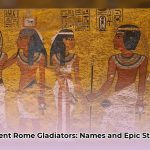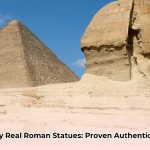Ever wanted to journey back to the grandeur and might of the Roman Empire? Grab your crayons and colored pencils, because Ancient Rome coloring pages offer an extraordinary, hands-on expedition into history! These aren’t just simple illustrations; they’re dynamic tools, transforming abstract historical concepts into engaging, memorable experiences for all ages. Imagine bringing to life the colossal Colosseum, depicting gladiators in thrilling combat, or meticulously detailing the architectural genius of the Pantheon. This creative approach makes learning about iconic emperors, fascinating mythological figures, and the intricacies of daily Roman life an adventure, sparking profound curiosity and fostering a lifelong love for the ancient world.
The Propulsive Power of Color: Unlocking Historical Understanding & Fun
Why settle for passive learning when you can actively engage with history? Ancient Rome coloring pages are a powerful, accessible resource for parents, educators, and children to connect with the past in a truly interactive and impactful way. They offer a versatile platform for diverse educational activities, from simple craft projects to structured learning modules, ensuring historical knowledge sticks and resonates deeply.
Sparking Memory and Deepening Curiosity Through Active Engagement
Traditional textbooks can sometimes feel daunting, presenting complex historical ideas in a static format. However, the act of coloring effortlessly breaks down these barriers. When children actively participate by choosing colors, focusing on intricate details, and internalizing the subject matter, their engagement skyrockets. This hands-on, multi-sensory process significantly improves information retention and comprehension.
Consider the simple act of coloring a Roman soldier: it naturally leads to questions about their impressive armor, their rigorous daily lives, the formidable Roman legions, and the vast Roman Empire history they bravely defended. This visual and kinesthetic learning approach helps solidify facts, making historical figures, military strategies, and major events far more memorable than rote memorization alone. Studies in educational psychology consistently demonstrate that active participation, like that fostered by coloring, can lead to significantly enhanced information recall and deeper understanding.
Hands-On Projects: Transforming Pages into Living History
Coloring pages are merely the starting point for a myriad of educational activities for kids. They can be transformed into robust ancient world crafts that extend the learning beyond the two-dimensional page, allowing children to physically construct and interact with historical concepts.
For instance, turning a Roman shield coloring page into a sturdy cardboard replica for dramatic play or using vibrant illustrations of Roman gods and goddesses to create mythology flashcards can significantly deepen understanding of mythological narratives and their cultural significance. Such projects encourage children to research further, think creatively about historical objects and their functions, and actively construct their knowledge. When coloring becomes a component of larger, tangible projects, learning shifts from a mere task to an exciting quest, often leading to reported increases in topical discussions and collaborative learning among participants in educational settings. Imagine designing a Roman mosaic using colored paper squares, replicating the beautiful floor art discovered in ancient villas, or building a mini-Colosseum model from recycled materials, visualizing its grand scale.
Iconic Roman Scenes and Figures: A Palette for the Past
From the mighty leaders who shaped an empire to the incredible structures that still stand as engineering marvels, printable Roman art allows you to visualize and internalize key elements of this foundational civilization. These detailed images serve as fantastic springboards for learning about Roman history resources and the remarkable people who lived it.
Emperors, Gladiators, and the Fabric of Daily Roman Life
Imagine adding vibrant hues to the polished armor of a brave gladiator, bringing to life the thunderous roar of the crowd in the Colosseum’s elliptical arena. Through coloring, one can explore the distinct attire and weaponry of different gladiator types, from the heavily armored murmillo to the net-wielding retiarius. Or consider meticulously coloring the stoic, determined face of Julius Caesar, an iconic Roman emperor whose military genius and political ambition reshaped the very foundations of the Republic. Each stroke can emphasize the details of his characteristic laurel wreath, a symbol of triumph and power. Similarly, coloring Augustus, Rome’s first emperor, can highlight his youthful yet authoritative appearance, reflecting the dawn of the Pax Romana.
These pages also frequently depict scenes of ordinary daily Roman life, offering windows into the customs and social structures of the time. From toga-clad citizens strolling through bustling marketplaces to the communal relaxation of the public baths, or even preparations for lavish Roman dinner parties, each visual detail connects the artist to the unique customs and social stratification of the era. Coloring these scenes helps children understand the differences between the attire of a senator, a common citizen, or a slave, fostering an appreciation for the social hierarchy of ancient Rome.
Architectural Wonders and Enigmatic Mythology
The unparalleled grandeur of ancient Roman architecture is perfectly captured in coloring pages featuring the intricate arches of the Colosseum, the majestic dome and oculus of the Pantheon, or the impressive multi-tiered spans of the aqueducts that supplied cities with fresh water. As you color these enduring symbols, consider the engineering marvels they represent, the ingenuity of Roman concrete, and the specific purpose each structure served within the Roman world. These foundational elements directly influenced subsequent Western architecture.
Additionally, immersing yourself in Roman gods mythology through coloring pages depicting Jupiter (king of the gods, often with a lightning bolt), Mars (god of war, with shield and spear), or Venus (goddess of love and beauty, perhaps with doves or a mirror), introduces children to the rich tapestry of ancient beliefs and legends. Engaging with these powerful narratives and their visual representations through art is a truly interactive history experience, enabling children to identify the distinct symbols and roles of each deity, and how they permeated Roman culture, art, and daily rituals.
Curating Your Roman Coloring Journey: Finding & Using Quality Resources
Finding high-quality, historically accurate historical coloring books and pages is crucial for an enriching learning experience. The internet offers a wealth of options, but discerning valuable resources is key for effective homeschooling history or classroom integration.
Curated Online Platforms for Authentic Exploration
Several reputable websites provide excellent free and printable ancient Rome coloring pages. Here’s a quick guide to some top destinations, noting their specific strengths:
| Resource | Description |
|---|---|
| Coloring.ws | Offers a wide array of free, printable Roman-themed pages, perfect for exploring various aspects of ancient life, from daily routines to significant figures and structures, providing detailed and accurate representations. |
| Coloringpagesonly.com | Features a dedicated section for Ancient Rome, including detailed images suitable for various ages, depicting emperors, gladiators, famous Roman buildings, and mythological scenes, with a focus on engagement and clear benefits for learning and creativity. |
| Kindergartenworksheetsandgames.com | Provides fun history lessons with coloring pages that integrate reading and learning activities, offering context for the visuals. This resource is ideal for younger learners, covering topics like the Colosseum, aqueducts, Roman roads, food, and clothing, enhancing basic historical understanding. |
| Coloringlib.com | A diverse collection of pictures covering Roman life, legendary figures, and significant events, suitable for various age groups in historical art projects. It aims to be both educational and entertaining, encouraging artistic exploration of Roman themes. |
| Supercoloring.com | An extensive website offering a massive selection of gladiator coloring pages, Colosseum drawing pages, and much more related to ancient civilizations. Its broad categories allow for deep dives into specific aspects of Roman history, from military gear to imperial symbols, providing high-detail illustrations. |
When selecting resources, prioritize sites that offer clear, detailed line art, and, ideally, provide a brief historical caption or context for the image. Look for variety in subject matter, from grand monuments to intimate scenes of daily life, ensuring a comprehensive view of the civilization.
Beyond the Page: Crafting Your Own Roman Relics
Move beyond two dimensions and bring Roman artifacts to life! Creating your own Roman objects from scratch is an effective teaching history through art method that reinforces learning, boosts creativity, and provides a tangible connection to the past.
Step-by-Step: Constructing a Roman Scutum (Shield)
Building a Roman scutum (shield) can transform a coloring page idea into a tangible historical artifact, fostering a deeper connection to Roman military history. This project, which typically takes about an hour to craft, offers a significant sense of accomplishment and a durable prop for imaginative play or historical reenactment.
- Gather Materials: You’ll need a large, sturdy piece of cardboard (an old appliance box works great), sharp scissors or a utility knife, acrylic paints (red, brown, metallic gold/silver are ideal), a pencil, markers, and a sturdy handle (a strip of layered cardboard, a small wooden dowel, or even a plastic coat hanger handle). Strong adhesive such as hot glue or duct tape will be essential.
- Sketch the Shape: On the cardboard, draw a large rectangular shape (approximately 3ft x 2ft for a child’s shield, adjusting for size) with rounded corners. Roman scuta were often large, curved rectangles, so aim for a substantial size that evokes their protective purpose.
- Cut and Shape: Carefully cut out the shield shape. For a more authentic feel, you can gently curve the cardboard by scoring lines on the back and bending it, or by placing weights on the edges while it dries if you apply a layer of glue for rigidity.
- Paint and Decorate: This is where your ancient Roman art knowledge comes alive! Paint the shield’s base color, typically a deep red for legions. Once dry, add traditional Roman designs. Common motifs include stylized wings (representing victory), lightning bolts (Jupiter’s power), or the iconic Roman eagle (Aquila) – symbols of the legions’ might and imperial authority. A central boss (umbo) can be simulated with a painted circle or a small cup glued to the center.
- Attach the Handle: On the back of the shield, secure your chosen handle with strong glue and reinforce it with duct tape. Ensure it’s robust enough for active holding and swinging.
- Ready for the Arena: Your very own homemade Roman scutum is now complete, ready for imaginative play as a legionary or centurion, or as a powerful visual aid for storytelling about Rome’s military conquests!
Expanding Your Roman Art Projects: A Pantheon of Possibilities
Beyond shields, consider how kids art projects can further explore Roman themes, making learning a continuous, creative process.
- Colosseum Diorama: Use colored pages of the Colosseum as a backdrop and construct a 3D diorama using paper, craft sticks, and other recycled materials. Add small figures of gladiators or spectators to populate the scene. This project enhances spatial reasoning and understanding of architectural scale.
- Mythology Flashcards: Combine your colored Roman gods and goddesses with key facts about their roles, symbols, and myths. Laminate them for durability and use them for educational games or storytelling.
- Roman Mosaic Art: Cut out pieces of your colored designs or use small squares of colored paper (construction paper works well) and assemble them into a mosaic, mimicking ancient Roman floor or wall art. This teaches about patterns, repetition, and the artistic techniques of the period.
- Toga Transformations: Color figures in tunics or stolas, then learn about how Romans draped togas. You can even try draping a simple bedsheet to understand the complexity of this iconic garment.
Such activities, as many classroom activities demonstrate, make abstract historical concepts tangible and provide a robust learning curve, allowing children to literally put their hands on history.
The Imperative of Authenticity: Coloring with Historical Integrity
While learning about ancient civilizations through art is incredibly beneficial, maintaining historical accuracy is paramount. Just as you wouldn’t want a knight wearing sneakers, understanding and avoiding common factual errors ensures your ancient Rome coloring experience is genuinely educational and builds a reliable foundation of knowledge.
Common Pitfalls in Roman Art: Spotting Inaccuracies
Many readily available coloring pages, especially those not vetted by historical experts, can unintentionally misrepresent historical facts, leading to misconceptions that are hard to unlearn. Look out for these prevalent issues:
- Anachronisms: These are objects or elements depicted that simply didn’t exist in ancient Rome. Examples include zippers on tunics, modern hairstyles on emperors, eyeglasses, or wristwatches. The clothing, tools, and technology must align with the period.
- Mythological Misrepresentations: Incorrect attributes or symbols assigned to Roman gods and goddesses. For instance, depicting Mercury without his winged sandals or Caduceus, or Venus without a shell or doves, would be inaccurate to their traditional iconography.
- Architectural Errors: Structures lacking characteristic Roman features like true arches, concrete domes (as seen in the Pantheon), barrel vaults, or specific column orders (Doric, Ionic, Corinthian). An Egyptian pyramid styled as a Roman temple, or simple rectangular buildings without distinct Roman architectural elements, are common errors.
- Social Inaccuracies: Misrepresentation of social roles, daily life, or societal norms. An example might be a noblewoman depicted engaging in manual labor typically performed by slaves, or the widespread depiction of everyone wearing a toga, which was actually a formal garment reserved primarily for male Roman citizens, not everyday wear.
- Geographic Gaffes: Roman landmarks depicted in locations where they historically never existed, such as the Colosseum placed in ancient Britain or a triumphal arch in Greece.
Ensuring Authenticity in Your Creations: A Historian’s Approach
To guarantee your Roman history resources are reliable and truly educational, a little discerning effort goes a long way. This ensures that every coloring session is a true educational activity rather than just an artistic one, building a factual understanding of the past.
- Cross-Reference visuals: Always compare coloring pages to images from reputable historical sources. Explore online collections of world-renowned museums such as the British Museum, the Capitoline Museums in Rome, the Louvre, or the Metropolitan Museum of Art. Does the chariot design, the armor of a legionary, or the architectural details of a temple match what you see in verified historical artifacts and scholarly reconstructions? Look for original sculptures, frescoes, and surviving structures.
- Consult Experts (or their work): Lean on books, documentaries, or online resources from professional historians, archaeologists, and classicists. Many cultural institutions and universities provide free online resources that offer detailed and accurate information. For example, understanding that Roman soldiers wore segmented armor (lorica segmentata) primarily from the 1st century AD, rather than simpler chainmail, adds a layer of precision to your coloring.
By embracing this commitment to historical integrity, Ancient Rome coloring pages transcend simple entertainment. They become powerful, interactive portals to the past, fostering not only artistic expression but also a profound, accurate understanding of one of history’s most fascinating and influential civilizations. This approach empowers learners to become active participants in their historical education, ensuring the legacy of Rome continues to inspire and inform for generations to come.










